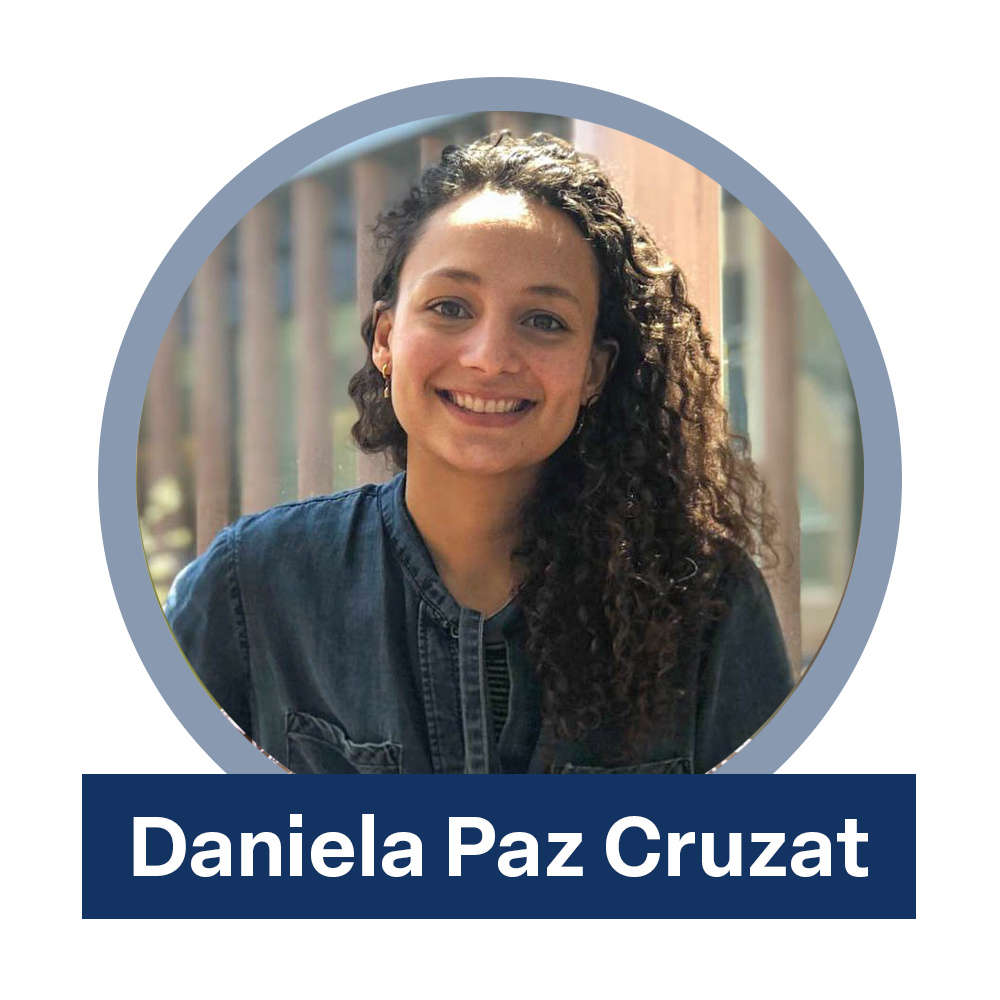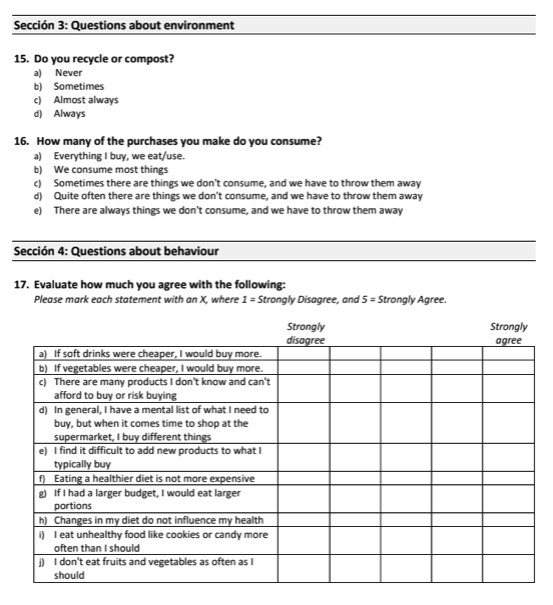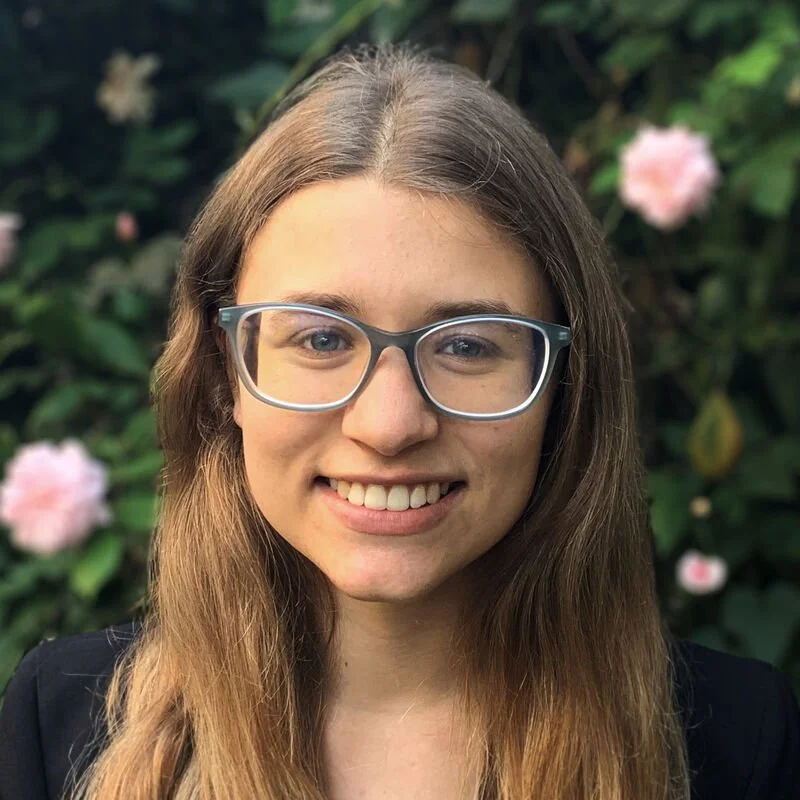A new article in CEPR highlights research from Reed Walker, Suvy Qin, + coauthors that leverages 40 years of administrative data to improve our understanding of the relationship between wealth and exposure to air pollution. The researchers find that, at all income levels, Black individuals are exposed to significantly higher levels of air pollution than white individuals. Learn more.
Climate change causes conflict: How policy can respond
In a column from CEPR, Marshall Burke, Solomon Hsiang, and Ted Miguel review literature on the relationship between conflict and climate. The authors highlight that, across contexts, studies consistently point to the social safety net as a tool to mitigate increases in violence induced by climate change by protecting household incomes from climate shocks. Read the full article.
Evaluating "Imperfectas pero Buenas," Walmart Chile's new initiative combatting food waste
Within the United States and other high income countries, most food waste happens at the household level. In low- and middle-income countries, however, the bulk of food waste occurs at the supplier level, before it ever reaches the consumer. As global food waste accounts for 12% of overall greenhouse gas emissions, the development of scalable strategies for reducing waste along the supply chain is crucial. Can new approaches to food waste simultaneously promote better health outcomes for people with limited resources?
This dual question is the focus of new research led by Daniela Paz Cruzat through the Initiative on Equity in Energy and Environmental Economics, which supports PhD students and undergraduate research apprentices in collaboratively investigating critical questions of energy, environment, and economic opportunity. With the help of two undergraduate mentees, Vanessa Perez and Jessica Yu, Paz Cruzat is working to evaluate “Imperfectas pero Buenas,” or “Imperfect but Good,” an initiative from Walmart Chile aimed at improving customers’ access to nutritional foods while also reducing food waste. By selling produce that does not meet Walmart’s standard shape and color requirements at lower costs, the initiative intends to reduce food waste from agricultural suppliers, who would otherwise waste the 5-15% of their produce considered noncompliant. Selling produce at a reduced price might also reduce barriers to adequate nutrition for low-income consumers, supporting improved health outcomes.
Figure 1: Section 3 of Daniela’s questionnaire for customers asks about environmentalism, while Section 4 features questions eliciting preferences around grocery shopping.
“Imperfect but Good” has rolled out gradually in Latin America: the program was piloted in 7 Chilean grocery stores in September 2022, and Walmart has since expressed intentions to scale the program to additional stores and countries. To empirically measure the program’s effects, Daniela’s will leverage this variation to compare the outcomes of similar consumers and firms who were exposed to the initiative at different points in time. Merging scanner-level product data provided by Walmart Chile (which documents details including product name, brand, price, and discounts) with data on customers enrolled in the Walmart loyalty program will allow Paz and the research team to link purchases to individual characteristics and control for variables including age and gender. Daniela will then supplement data from Walmart with a survey of 2,000 loyalty program members to elucidate the effects of nutritional knowledge, environmentalism, and individual preferences on consumption and program success. At the firm level, Daniela is also working with Walmart to access data from agricultural suppliers that spans firm-level characteristics and transactions, to better understand how the initiative has affected their growth and experience.
Working with a large, private entity like Walmart has presented Daniela with challenges, but also tremendous opportunities for impact at scale. As Walmart had no plans for an impact evaluation of “Imperfect but Good,” Daniela saw an opportunity to offer help – but had to secure buy-in from Walmart leadership. “We started following people on LinkedIn…trying to get our first contact to make other contacts. After a long time, there was one person who clicked with our idea, [and] that was the person who manages the data.” Despite facing initial hurdles related to data access, Daniela is optimistic about the potential impact of the project, due to Walmart’s position as a large, multinational firm, with a growing presence in Latin America. “The size of Walmart…the environmental impact they could have is huge.
Through the Initiative on Equity in Energy and Environmental Economics, Daniela is also guiding her undergraduate mentees as they explore options for graduate school, internships, and careers in energy and environmental research and policy. For Jessica Yu, a senior beginning the graduate school application process, Daniela shared insights on important factors like grades, recommendation letters and exams required. Senior Vanessa Perez, who supported the project by collecting novel data about produce suppliers and translating materials from Spanish to English, entered the mentorship program aspiring to work on sustainability in the private sector, making Daniela’s project a natural fit. While Daniela’s mentees have developed their technical skillsets throughout the project, Paz emphasized the importance of a mentor-mentee relationship that caters to the bigger picture. “I feel that undergraduates are a bit alone…with decisions, where to work, how to ask people for a meeting, what to ask in the meeting, how to write an email…For one of our mentees, it was her first experience coding with real data. That’s great, but it’s also the people you know, the contacts, the networking…that [support] can be extremely valuable.”
How do major flooding events impact women’s labor force participation in India?
As climate change increases the intensity of natural disasters, India’s monsoon season and resulting flooding increasingly threaten women’s autonomy. Globally, researchers are concerned that climate events are reversing progress made in women’s labor force participation, especially in low-income or rural areas. Elena Stacy, doctoral candidate in Berkeley’s Department of Agricultural and Resource Economics (ARE) and fellow through the O-Lab and Energy Institute’s Initiative on Equity in Energy and Environmental Economics, investigates this dynamic in detail in her project: “The Impact of Floods on Women’s Empowerment and Female Labor Force Participation in Rural India in the Age of Climate Change.”
Before beginning her PhD at UC Berkeley, Elena spent time as a Pre-Doctoral Research Assistant with Yale’s Economic Growth Center. There, she worked on a project designed to improve the cost and time-effectiveness of time use surveys, a type of survey module which measures how individuals allocate time towards different activities in a 24-hour period. Elena worked with Rohini Pande in Patna, Bihar, during the summer — India’s rainy season — and was often ankle-deep in water on her walk to work. It was the combination of these experiences that led Elena to consider using time-use data to better understand how women are impacted by climate disasters in India.
Elena’s project stands to explore the relationship between labor outcomes and climate impacts in a rural setting with an emphasis on gender disparities, filling an important research gap: while researchers have studied why women’s participation in the workforce is declining in India, and multiple studies have demonstrated how labor force participation advances women’s autonomy, few studies focus on how climate change complicates this dynamic. Elena’s paper contributes to this literature by leveraging time use data, which provides new insight into the drivers of low labor force participation among women. “If women are shifting away from labor, what is their time used on instead?”
To understand how women’s labor force participation is impacted by flooding, Elena cross-references time use data with geospatial data from the NASA MODIS satellite dataset. After converting geospatial images to usable data, she can estimate the severity and timing of flooding in different districts. Because the time use data is collected at different points in the year, it’s then possible to measure how women’s time use changes before and after a major flood event.
Eman Nazir, Undergraduate Research Apprentice
Hayley Lai, Undergraduate Research Apprentice
Through the 2022-2023 academic year, Elena has been conducting this work as part of O-Lab and the Energy Institute’s Initiative on Equity in Energy and Environmental Economics, which pairs graduate student fellows with undergraduate students, who benefit from research experience and graduate student mentorship. During her time as an undergraduate student at Berkeley, Elena spent time as an undergraduate research assistant herself, influencing her participation in the initiative: “My personal experience as an undergrad has definitely played a role in my own desire to be a graduate student mentor, and has also informed my approach in it.” Elena’s undergraduate mentees, Eman Nazir and Hayley Lai, have previous experience advocating for environmental justice and women’s empowerment; Elena described how it was important for her to steward their curiosity in her research questions, and provide plenty of country context, to lay a foundation for their data analysis tasks. Since beginning their partnership in Fall 2022, Eman and Hayley have built on their existing experience with R to tackle more advanced data cleaning tasks, and gained experience working with geospatial data. “They’ve put in a lot of work in terms of understanding the project, advancing their programming skills and conducting research,” says Elena. “I’m lucky to have two great, undergrad women in Econ on my mentee team.”
While Elena is still in the early stages of her project, she’s hopeful that her research will inform meaningful policy impact and spur future research on the intersection of gender and climate change in India. In the short term, as Elena cleans, links, and processes novel data, she intends to share it online, alongside her code, in order to make it more approachable for other researchers to examine the impacts of flooding. In the future, if her work does find that floods and severe climate events are disproportionately shifting women away from labor, she hopes that policymakers will make efforts to alleviate these disparities — for example, by specifically targeting women through the state’s existing government labor program, NREGA, or providing alternative childcare options in the event of school closures.
Sol Hsiang on The Economic Damages of Climate Change
Sol Hsiang’s research at the Climate Impact Lab was featured in the New York Times Magazine cover story this September. The data suggests that the impacts of climate change on the poorest Southern counties could lead to economic damages greater than a third of their total GDP. The article explores the mass migrations that such damages could invoke.
Take a look at the full article here!
Understanding the Distributional Impact of New Electricity Technologies in Senegal
How do different electricity technologies impact the way that we use energy — and how should technological roll-outs be targeted in order to achieve efficiency gains to both customers and utilities? Abdoulaye Cissé, a Ph.D. candidate in Agricultural and Resource Economics, has spent his time as a Fellow through O-Lab and Haas Energy Institute’s Initiative on Equity in Energy and Environmental Economics asking these questions.
Cissé’s research aims to better understand the energy and electricity value chain in Senegal, where he was born. Cissé grew up hearing conversations about electricity, and his project was heavily inspired by energy issues his family and community faced at home. "There’s a lot of discussion around electricity that I wound up hearing, a lot of issues I grew up experiencing. If you look at the last two changes of power in Senegal, many would argue that, at least partially, they had to do with electricity shortages being quite significant,” he said.
After reading a news article in 2020 citing transparency issues around electricity rates and payment structures, Cissé approached Senegal’s state electricity utility, Société Nationale d’Electricité du Senegal — or SENELEC — in the midst of a new technology rollout. With the provision of smart and prepaid meters, customers would now be able to see their real-time energy consumption and price, with the goal of encouraging cost-saving and energy conservation. Meters also report back to the utility company, enabling informed distribution decisions and limiting losses. Cissé is investigating how the roll-out might impact consumers differently. He proposed a research project to examine the project’s welfare implications in detail; SENELEC was responsive and agreed to support his research. For SENELEC, an analysis of the impact of new technologies on electricity use is crucial to the reduction of “technical losses” (for example, electricity lost through transmission, distribution, and measurement systems), as well as non-technical losses (such as unpaid bills) at points of consumption.
To study the impacts of the new metering technologies, Cissé is examining billing and payment records, provided by the state energy utility, to understand how much consumers pay for electricity and whether bills are paid on time. Payment data is then cross-referenced with electricity consumption data, building a consumption and purchase history for 1.7 million customers over ten years. Each piece of billing data is associated with an address, allowing Cissé to cross-reference consumer data with regional and local satellite data estimating different economic variables. Altogether, these data allow Cissé to analyze a variety of predictors for Senegalese electricity consumption and payment, isolating the impact of new technologies on energy use. In particular, the data will help Cissé learn whether - and how - consumer decisions may be changing as a result of the new technologies.
Cissé’s project provides crucial insights on the general economic impact of electrification as well as potential distributional consequences of the rollout of the technology, and the analysis of SENELEC’s data alongside satellite data will allow him to see how the economic gains from electrification may accrue differently across regions and income groups. This is especially important in Senegal, where Independent Power Producers (IPPs) – private companies that generate electricity for sale to SENELEC – are often located in rural areas, yet produce power for urban centers. The costs of power generation in these rural areas can be substantial, and include land clearance, noise pollution, emissions from non-renewable power generation, and spillover effects of power plants on local ecosystems. These impacts burden rural populations, while the benefits of electricity generated accrue more to urban residential and commercial clients. Accordingly, the design of power generation to increase electricity access has distributional impacts that warrant further analysis.
Ella Tyler, Undergraduate Research Apprentice
Analyzing ten years of electricity bills and purchases, across an entire country, is no small feat, and Abdou has benefitted in his work from the support of undergraduate research assistants he is mentoring through the Initiative on Equity in Energy and Environmental Economics. As part of this initiative, Abdou has mentored 4 students, providing research training experience and guidance on careers in environmental policy and research. Ella Tyler, for example, worked with Abdou through the 2021 - 2022 academic year; she brought a strong data science background to the project and used her Python skills to help Abdou with data analysis. At the same time, he offered her training in research methods and helped her set up a job as a Research Assistant in Sierra Leone.
As he enters his fourth year in the Ph.D. program, Cissé is nearing the final stages of his data collection work: combining geocoordinate data from SENELEC with remote sensing data and identifying the economic metrics that make the most sense to consider in his analysis. With funding from O-Lab and the Energy Institute, Cissé also hopes to collect primary data on a subset of households next spring, in order to get to know clients beyond their consumption data and consider more predictors of behavior around electricity consumption and payment.
Cissé is regularly in touch with SENELEC, and hopes to return to the utility with policy recommendations related to the impact of meters on energy demand, how to target roll-outs to different types of customers, and the impact of the meters on the economic conditions of residential and commercial customers. He is optimistic about the potential for his research to inform policy on how to best strategize these investments.
Meredith Fowlie on the Cost of Electricity in California
Research from Meredith Fowlie & coauthors at the Energy Institute at Haas is the centerpiece of a Washington Post analysis on the cost of electricity in California. The article describes how California’s electricity tariffs add about $600 to the annual running cost of an electric vehicle in California, on average. Read the article here.
Max Auffhammer on Increasing the Social Cost of Carbon
According to a new study published in Nature, the social cost of carbon estimate used by the federal government does not reflect recent research – in fact, carbon should be priced 3.6 times higher. In the Associated Press, authors highlight this nature study and invite commentary from Max Auffhammer, who praises the new model and its design. Read the article here.
Solomon Hsiang on Estimating the Social Cost of Carbon
Sol Hsiang recently co-authored a study published in Nature quantifying the social costs of carbon emissions by “characterizing how additional CO2 emissions today impact future economic outcomes through altering the climate.” Read the publication here.
Solomon Hsiang on Climate Change Migration
Solomon Hsiang recently appeared in a segment of NPR’s Marketplace discussing how climate change crises such as rising sea-levels and water scarcity could potentially leave over 200 million people without homes in the next 30 years. However, as Hsiang highlights, “migration is tricky … because people have a lot of incentive to stay where they are.” Listen to the episode here.
How Place-Based Climate Policy Can Reduce Climate Emissions
How does a community’s built environment and access to public goods impact their carbon emissions? How does income inequality impact peoples’ options for reducing carbon emissions? Fifth-year PhD candidate and O-Lab fellow Eva Lyubich is exploring these questions in an ongoing set of projects focused on how place-based climate strategies might help curb climate emissions. Eva’s research interests lie at the intersection of climate policy, inequality, and public goods provisions, and she is particularly focused on finding viable solutions to mitigate the climate crisis.
In ongoing work, Eva is studying whether place-based climate policies - climate policies focused on local investments in climate mitigation solutions - would be more effective than carbon taxes at reducing carbon emissions. Economists typically suggest that carbon taxes force people to privately account for the harm they contribute to globally. However, people’s ability to substitute away from dirty energy consumption is highly dependent on alternatives available to them on a local level. “If certain public goods investments have the capacity to reduce carbon emissions for many people all at once, then it may be more efficient to make investments in public goods rather than relying on individuals to make private investments on their own,” she said. For example, policies that change the built environment of a community, such as making it more walkable, bikeable, or investing in public transit reduce carbon emissions while positively benefiting a community by increasing the available transportation options.
Eva’s motivation for this paper came from “the idea that individuals are constrained by the choices they can make and could therefore be limited in their ability to reduce their individual carbon footprints.” A few of the questions behind this research agenda include: How do characteristics of places constrain our ability to reduce emissions? Would people change their behaviors if we changed the characteristics of a place? Do people drive because they don’t have access to high quality public transit or do they like driving and will they drive everywhere regardless of if they have access to a public transit system? Eva is trying to estimate what share of geographic variation in carbon emissions is driven by characteristics and policies governing the places people live in versus differences in people’s preferences.
“Individuals are constrained by the choices they can make and could therefore be limited in their ability to reduce their individual carbon footprints.
In this project, Eva estimates what share of emissions are place-based using what is known as a mover design, in which she studies how people’s emissions change as they move to different places. She hopes to use these estimates to inform what type of investments and what geographic locations have the highest benefit to cost ratio in reducing overall emissions. According to Eva, “this research has the potential to help local, state, and federal governments determine where we should be investing to make the highest emissions reductions.” An example of an existing program that is making place-based climate investments is the California Climate Investments initiative, which uses cap-and-trade revenues to fund community-based projects for reducing greenhouse gas emissions, particularly in disadvantaged communities.
“This research has the potential to help local, state, and federal governments determine where we should be investing to make the highest emissions reductions.
More broadly, Eva plans to study the consequences of income inequality on our collective ability to address the climate crisis. The availability of a community’s options to reduce their carbon footprint is highly impacted by the distribution of public goods, which is largely dependent on the income distributions of a community. Income inequality and mitigating the climate crisis go hand in hand. “In a future project, I hope to study how the distributions of public goods and income inequality intersect with climate policy effectiveness. Does income inequality across communities prevent climate policy from being successful?” Eva’s research projects have great potential to influence social policies, climate policies, and secure our planet’s future.
Sol Hsiang on global COVID response policies: No Human Endeavor Has Saved So Many Lives in Such a Short Period of Time
O-Lab Affiliate Sol Hsiang, and his collegues at the Global Policy Lab, have produced new research on the lives saved due to COVID response policies and behaviors. The team looks closely at 6 countries and estimates that response policies have prevented a total of over 500 million COVID infections.
The work was published in Nature and Hsiang discussed the findings on the Rachel Maddow Show.
What Caused Racial Disparities in Pollution Exposure to Fall? New Evidence from the Clean Air Act and Satellite Measures of Air Quality
Summary of research by Janet Currie, John Voorheis, and Reed Walker.
Why is Pollution from U.S. Manufacturing Declining?
Research brief summarizing work by Joseph S. Shapiro and Reed Walker.
























